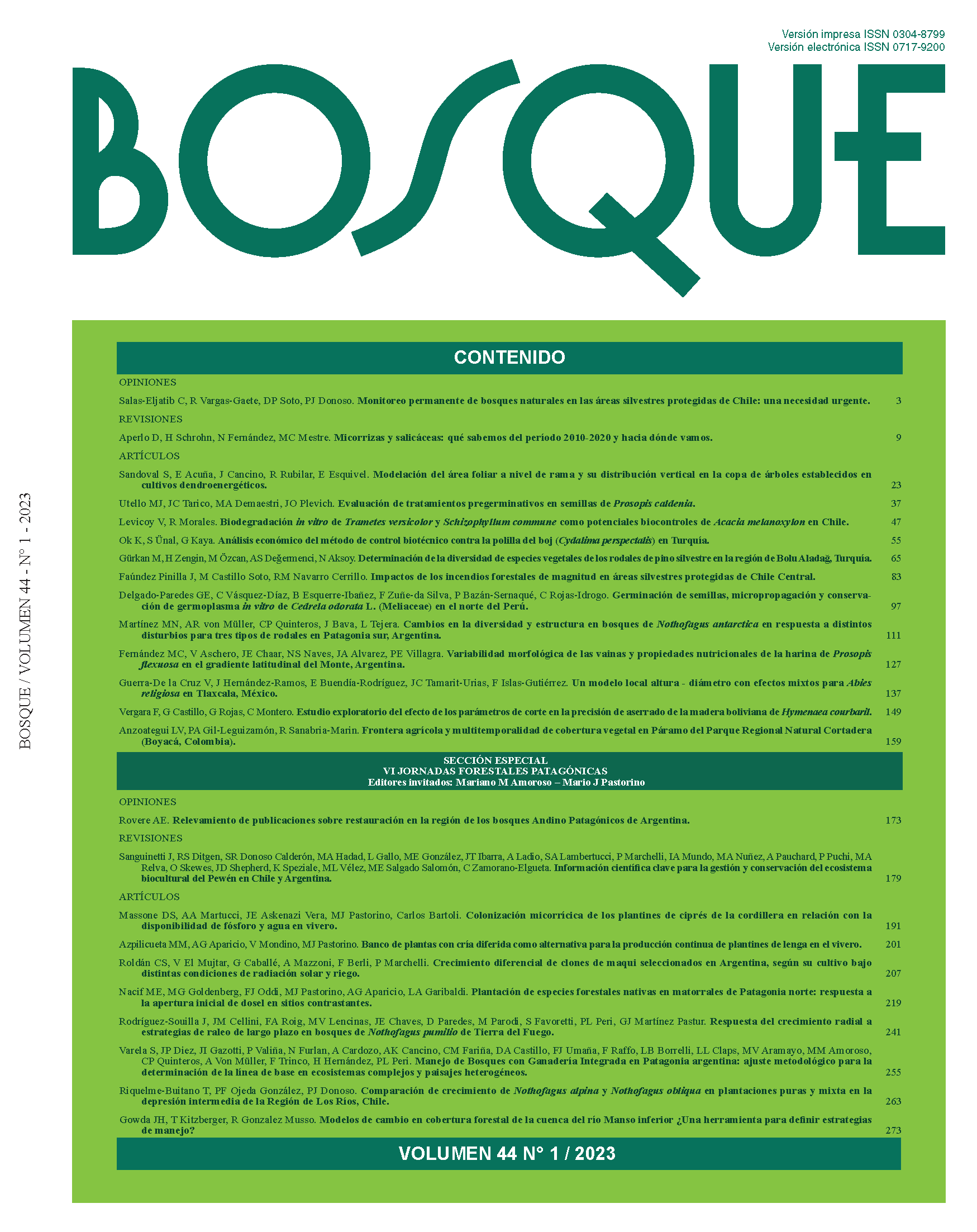Seedling bank with deferred growth as an alternative for the continuous production of lenga plants in the nursery
Main Article Content
Abstract
Lenga (Nothofagus pumilio) is a tree of primary importance that is native to Patagonia. Its cyclical production of seeds and the lack of protocols that would conserve them for several years creates a bottleneck for the regular production of seedlings. However, this species has the capacity to form natural seedling banks, where seedlings under a closed canopy tolerate long periods of suppression practically without growing. This suggests that a similar effect could be achieved in the nursery, thus allowing plants (rather than seeds) to be artificially stored. In this study, we analyze the feasibility of a management system with deferred pricking out and growing as an alternative for the production of lenga seedlings. The system consisted of germinating the seeds the same year they were collected and maintaining the seedlings for three years at a very low growth rate, forming a dense “seedling bank”, by controlling nutrients and limiting space. Then, the seedlings were pricked out and grown under standard production conditions for two years. The quality of 560 seedlings grown with this system was compared with that of plants grown intensively in forestry seedling trays and with reference values, using two-sample and one-sample t-tests, respectively. The seedlings with deferred growth reached similar slenderness and stem/root ratio to the plants grown intensively, and were also similar in terms of reference values for other analyzed size variables (collar diameter and stem height). Although preliminary, the results suggest the feasibility of this technological proposal and justify further improvement.

